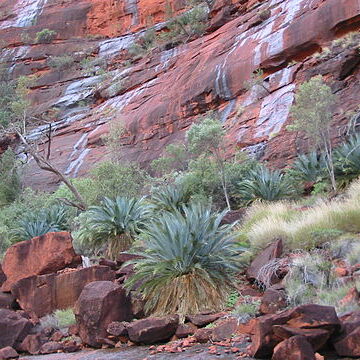A medium sized cycad. The trunk can be erect or lie along the ground. The trunk is 3 m long and 1 m across. The young leaves are powdery blue. The bases are pink. There are many mature leaves forming a graceful rounded crown. The leaves are 1.5-2.5 m long by 30-40 cm wide. They are powdery blue green and swollen and woolly at the base. There are many leaflets crowded along the stalk. The tip is sharp. The average leaflet is 20-30 cm long by 0.7-1.1 cm wide. The cones are different. Male cones are 25-40 cm long by 8-10 cm wide. They are usually curved. Female cones are 40-50 cm long by 20-27 cm wide. They are barrel shaped. The seeds are 6-8 cm long by 3.5-5 cm wide. They are oblong and orange to red.


